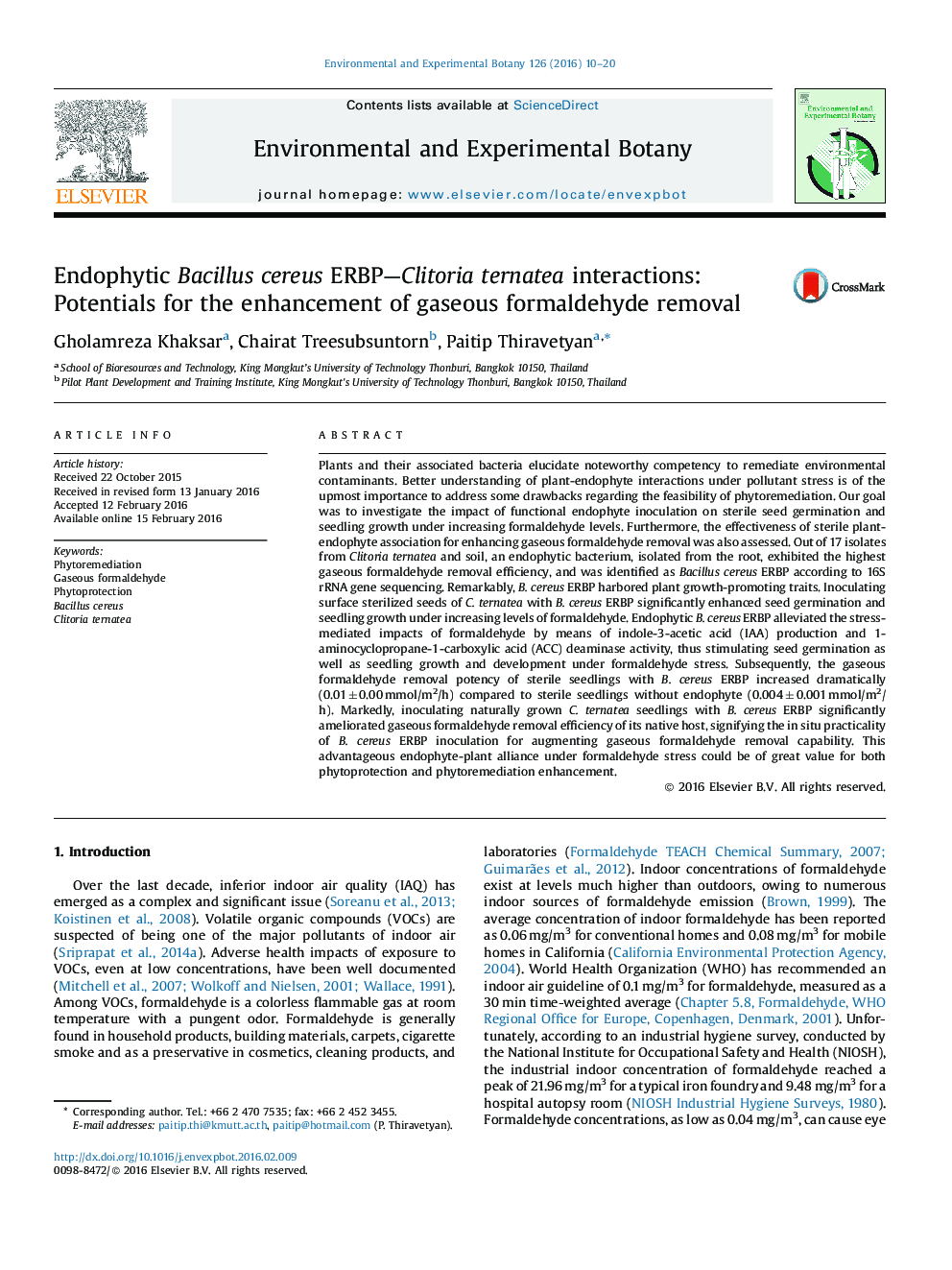| کد مقاله | کد نشریه | سال انتشار | مقاله انگلیسی | نسخه تمام متن |
|---|---|---|---|---|
| 4554146 | 1628051 | 2016 | 11 صفحه PDF | دانلود رایگان |

• Sterile seeds of Clitoria ternatea were inoculated with endophytic Bacillus cereus.
• B. cereus enhanced seed germination and seedling growth under formaldehyde stress.
• B. cereus amended gaseous formaldehyde removal of sterile C. ternatea seedling.
• B. cereus inoculation into natural C. ternatea boosted gaseous formaldehyde removal.
• C. ternatea–B. cereus interactions enhanced gaseous formaldehyde remediation.
Plants and their associated bacteria elucidate noteworthy competency to remediate environmental contaminants. Better understanding of plant-endophyte interactions under pollutant stress is of the upmost importance to address some drawbacks regarding the feasibility of phytoremediation. Our goal was to investigate the impact of functional endophyte inoculation on sterile seed germination and seedling growth under increasing formaldehyde levels. Furthermore, the effectiveness of sterile plant-endophyte association for enhancing gaseous formaldehyde removal was also assessed. Out of 17 isolates from Clitoria ternatea and soil, an endophytic bacterium, isolated from the root, exhibited the highest gaseous formaldehyde removal efficiency, and was identified as Bacillus cereus ERBP according to 16S rRNA gene sequencing. Remarkably, B. cereus ERBP harbored plant growth-promoting traits. Inoculating surface sterilized seeds of C. ternatea with B. cereus ERBP significantly enhanced seed germination and seedling growth under increasing levels of formaldehyde. Endophytic B. cereus ERBP alleviated the stress-mediated impacts of formaldehyde by means of indole-3-acetic acid (IAA) production and 1-aminocyclopropane-1-carboxylic acid (ACC) deaminase activity, thus stimulating seed germination as well as seedling growth and development under formaldehyde stress. Subsequently, the gaseous formaldehyde removal potency of sterile seedlings with B. cereus ERBP increased dramatically (0.01 ± 0.00 mmol/m2/h) compared to sterile seedlings without endophyte (0.004 ± 0.001 mmol/m2/h). Markedly, inoculating naturally grown C. ternatea seedlings with B. cereus ERBP significantly ameliorated gaseous formaldehyde removal efficiency of its native host, signifying the in situ practicality of B. cereus ERBP inoculation for augmenting gaseous formaldehyde removal capability. This advantageous endophyte-plant alliance under formaldehyde stress could be of great value for both phytoprotection and phytoremediation enhancement.
Figure optionsDownload as PowerPoint slide
Journal: Environmental and Experimental Botany - Volume 126, June 2016, Pages 10–20